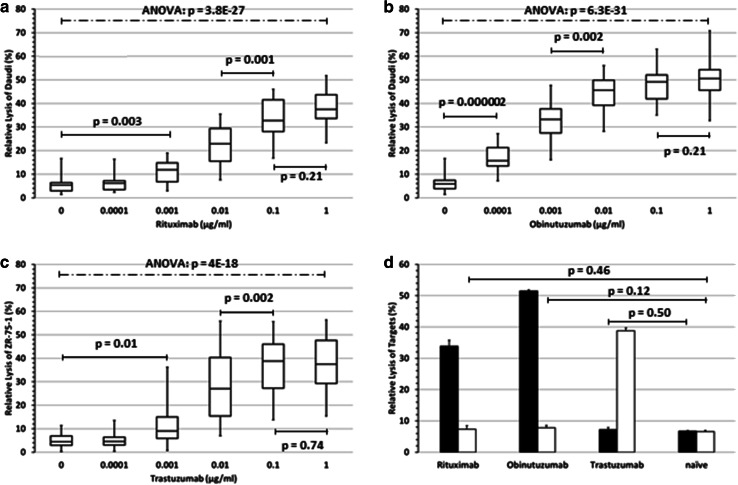Fig. 1.
NK-cell activity and NK cell-mediated ADCC before vitamin D3 substitution NK-cell activity (0 µg/ml antibody) and NK cell-mediated ADCC of all 15 subjects with a deficiency or insufficiency of vitamin D3 against CD20+ DAUDI cells treated with rituximab (a) or obinutuzumab (b) and ZR-75-1 breast cancer cells treated with trastuzumab, respectively (c). The E:T ratio was 5:1. Boxplots indicate lower quartile, median, and the upper quartile. The lower whisker depicts the lowest and the upper whisker the highest lysis rate. Statistics: p values below or above the solid lines were determined by two-sided T test and p values over the broken lines by ANOVA. d In contrast to both anti-CD20 antibodies rituximab and obinutuzumab, the ADCC induced by the HER2/neu-specific antibody trastuzumab against CD20+ DAUDI cells (black columns) was not increased compared to the NK-cell activity against naïve DAUDI cells (trastuzumab vs. naïve, p = 0.50). Conversely, rituximab and obinutuzumab dependent ADCC against the HER2/neu+ cell line ZR-75-1 (white columns) was not increased compared to the NK-cell activity (without antibodies) against ZR-75-1 breast carcinoma cells (rituximab vs. naïve, p = 0.46; obinutuzumab vs. naïve, p = 0.12). NK cells used in this ADCC were derived from subject ID #75 before substitution and used at an E:T ratio of 5:1

